
Premium Android Phones
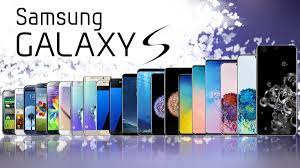 image ©PhoneArena
image ©PhoneArena
In 2010 Samsung released their Galaxy S range of phones as their flagship phone. These phones have, over the years, developed from the small 3g slightly "cheap-feeling" original to the premium device offered in 2021 as the S21. Screens have become bigger, cameras more sophisticated, more powerful processors, more memory, more storage and all together a much more powerful and desirable device. In recent years the new phones have become an evolution from the previous device without a "killer" feature. That is apart from the inclusion of 5G. Becasue of this, and due to the high quality of these phones customers are not swapping as often as previously, with a renewal time of (on average) 3 years rather than the previous 2.
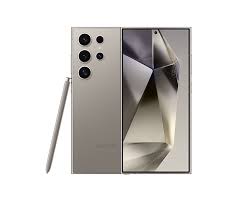 Samsung Galaxy S23 Ultra (2023)
Again an evolution rather than a revolution and again little reason for owners
of the S22 or S23 to upgrade. The focus in the marketing was again on the camera
but this time it is AI that drives these cameras. The new cameras with the new
software makes these cameras really good. Otherwise this is a great phone.
perhaps the main change is the flat fron t screen rather than the previous screen
with the curved edges
Samsung Galaxy S23 Ultra (2023)
Again an evolution rather than a revolution and again little reason for owners
of the S22 or S23 to upgrade. The focus in the marketing was again on the camera
but this time it is AI that drives these cameras. The new cameras with the new
software makes these cameras really good. Otherwise this is a great phone.
perhaps the main change is the flat fron t screen rather than the previous screen
with the curved edges
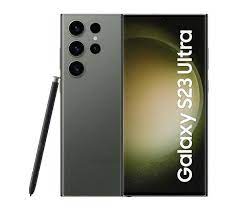 Samsung Galaxy S23 Ultra (2023)
There seemed even less reason to upgrade from an S22 to an S23 as the
specifications are very similar. An updated look to the phone made it look
sleeker. Again the focus was on the cameras but these were very similar to the
S22. Evolution rather than revolution.
Samsung Galaxy S23 Ultra (2023)
There seemed even less reason to upgrade from an S22 to an S23 as the
specifications are very similar. An updated look to the phone made it look
sleeker. Again the focus was on the cameras but these were very similar to the
S22. Evolution rather than revolution.
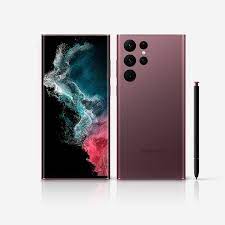 Samsung Galaxy S22 Ultra (2022)
The 2022 version S22 Ultra is an evolution of the previous version. It can be
argued that there are no new features, making this a difficult sell for Samsung
to those who had an S21. The focus in their marketing was all about the camera
and the S22 Ultra has 4 inbuilt cameras; a 108MPx wide angle camera, a 12MPx
ultra wide angle, 10MPx super telephoto and another 10MPx telephoto lens.
Samsung Galaxy S22 Ultra (2022)
The 2022 version S22 Ultra is an evolution of the previous version. It can be
argued that there are no new features, making this a difficult sell for Samsung
to those who had an S21. The focus in their marketing was all about the camera
and the S22 Ultra has 4 inbuilt cameras; a 108MPx wide angle camera, a 12MPx
ultra wide angle, 10MPx super telephoto and another 10MPx telephoto lens.
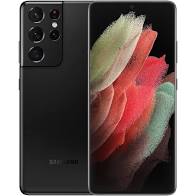 Samsung Galaxy S21 range (2021)
The 2021 version is an evolution of the previous models. All models have 5G
included with this technology being rolled out over the UK. Various versions
have 6.2, 6.5, and 6.8 screen. The top of the range S21 Ultra 5G has a fantastic
camera with uch Ai aimed to make a professional photographer from all of us.
Looking at the spec of this phone it is hard to find a reason why to upgrade from
the S20, but it is a better spec-ed phone than the S9.
Samsung Galaxy S21 range (2021)
The 2021 version is an evolution of the previous models. All models have 5G
included with this technology being rolled out over the UK. Various versions
have 6.2, 6.5, and 6.8 screen. The top of the range S21 Ultra 5G has a fantastic
camera with uch Ai aimed to make a professional photographer from all of us.
Looking at the spec of this phone it is hard to find a reason why to upgrade from
the S20, but it is a better spec-ed phone than the S9.
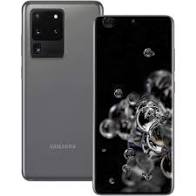 Samsung Galaxy S20 range (2020)
This is upgrade from the S10 but not a great leap forward. Yes it does have 5g
a gret camera, screen etc but not big must have feature. The top of the
range S10 Ultra 5G had a wopping 6.9in screen. With the "basic" having only
6.2inch screen.
Samsung Galaxy S20 range (2020)
This is upgrade from the S10 but not a great leap forward. Yes it does have 5g
a gret camera, screen etc but not big must have feature. The top of the
range S10 Ultra 5G had a wopping 6.9in screen. With the "basic" having only
6.2inch screen.
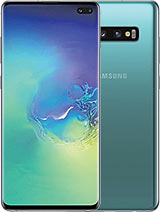 Samsung Galaxy S10 range (2019)
The latest version of the S version of Samsung phones is a range of phones.
The new S10 /S10+ are upgrades of the previous version.
At initial release these were 4G phones but later S10 phones were 5G phones, the S10 5G.
the S10 5G and S10+ both have an incredible 6.7inch screen. One drawback
was a "notch" in the display at the top right to accomodate the front camera.
This technology is a must have for the first adapters and the S10 is a popular
phone becasue of this. The camera layout is much better than the S9.
Samsung Galaxy S10 range (2019)
The latest version of the S version of Samsung phones is a range of phones.
The new S10 /S10+ are upgrades of the previous version.
At initial release these were 4G phones but later S10 phones were 5G phones, the S10 5G.
the S10 5G and S10+ both have an incredible 6.7inch screen. One drawback
was a "notch" in the display at the top right to accomodate the front camera.
This technology is a must have for the first adapters and the S10 is a popular
phone becasue of this. The camera layout is much better than the S9.
 Samsung Galaxy S9 (2018)
The S9 again came in two variants the S9 and S9plus and was largely seen as a
cosmetic upgrade from the S8. The most improved area was the camera(s) but
everything else was similar. The screen had grown to a whopping 6.2in on the
plus version. Not many would upgrade from S8 to S9 and hence the poor
sales. The author has an S9+ but upgraded from an S7, emphasising the point that
users neeed a good reason to upgrade.
Samsung Galaxy S9 (2018)
The S9 again came in two variants the S9 and S9plus and was largely seen as a
cosmetic upgrade from the S8. The most improved area was the camera(s) but
everything else was similar. The screen had grown to a whopping 6.2in on the
plus version. Not many would upgrade from S8 to S9 and hence the poor
sales. The author has an S9+ but upgraded from an S7, emphasising the point that
users neeed a good reason to upgrade.
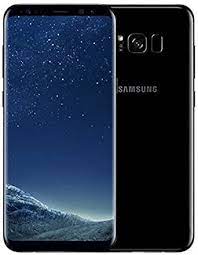 Samsung Galaxy S8 (2017)
Two versions of this model were released S8 and S8 plus with a 5.8in screen, back
to the size of the S6-edge-plus. The main changes came to the front screen
with the physical home button replaced by a dot on the screen. Also the large
company logo was removed and the bezels shrunk to give an edge to edge display.
Bixby - the Samsung voice assistant - was introduced but not to the fanfare Samsung
was hoping. One of the most popular google searches was "How do I disable Bixby?"
Samsung Galaxy S8 (2017)
Two versions of this model were released S8 and S8 plus with a 5.8in screen, back
to the size of the S6-edge-plus. The main changes came to the front screen
with the physical home button replaced by a dot on the screen. Also the large
company logo was removed and the bezels shrunk to give an edge to edge display.
Bixby - the Samsung voice assistant - was introduced but not to the fanfare Samsung
was hoping. One of the most popular google searches was "How do I disable Bixby?"
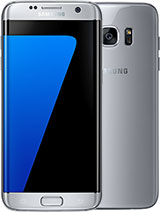 Samsung Galaxy S7 (2016)
The S7 seemed to be an update just because these were annual events. The phone
looked and felt much like the S6. Two modes the S7 and S7 edge with a 5.5 screen
which was smaller than the predecessor. The S6 had lost the water resistance tag
that was restored in the S7 as was the SD card slot for extra storage.
Samsung Galaxy S7 (2016)
The S7 seemed to be an update just because these were annual events. The phone
looked and felt much like the S6. Two modes the S7 and S7 edge with a 5.5 screen
which was smaller than the predecessor. The S6 had lost the water resistance tag
that was restored in the S7 as was the SD card slot for extra storage.
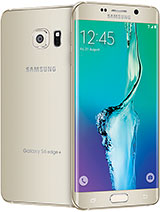 Samsung Galaxy S6 (2015)
There were 3 models in the S6 range from the basic S6 to the S6-Edge to S6-Edge-Plus.
The edge model was an introduction ot the screen curving at the edges (hence the name).
the largest model came with a large 5.6in screen. The camera had now reached 16Mpx
and a memory of 2Gb. The operating systems was Android 5.1 upgradable to Android 7.0.
The build quality was much better than before with a non-removable battery and
glass back and front with a metal frame. The battery was hidden away and not
accessible for the user. 4Gb of memory but no ability to add an SD card.
Samsung Galaxy S6 (2015)
There were 3 models in the S6 range from the basic S6 to the S6-Edge to S6-Edge-Plus.
The edge model was an introduction ot the screen curving at the edges (hence the name).
the largest model came with a large 5.6in screen. The camera had now reached 16Mpx
and a memory of 2Gb. The operating systems was Android 5.1 upgradable to Android 7.0.
The build quality was much better than before with a non-removable battery and
glass back and front with a metal frame. The battery was hidden away and not
accessible for the user. 4Gb of memory but no ability to add an SD card.
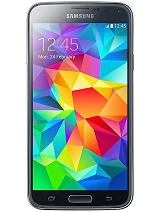 Samsung Galaxy S5 (2014)
Here it was in 2014 - 4G. The S5 was a great commercial success due to the
introduction of 4G as well as a change to the build with metal edges to the
screen and a "waterproof" design. Also, more importantly it felt good.
This was the last phone with a removable battery.
A large 5.1in screen stated to make a big difference in what the phone would be
used for.
Samsung Galaxy S5 (2014)
Here it was in 2014 - 4G. The S5 was a great commercial success due to the
introduction of 4G as well as a change to the build with metal edges to the
screen and a "waterproof" design. Also, more importantly it felt good.
This was the last phone with a removable battery.
A large 5.1in screen stated to make a big difference in what the phone would be
used for.
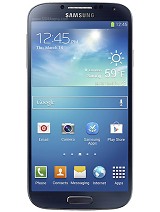 Samsung Galaxy S4 (2013)
Another upgrade with few added features. A new dual lens camera being the most
notable with 13Mpx. A number of other touchless interface changes were added
indicating the desire to move away from the finger presses all the time. Not
as much a commercial success as expected but with 4G on the horizon this was
not unexpected. These phones were now reliable and customers could wait for
some significant changes that forces them to upgrade.
Samsung Galaxy S4 (2013)
Another upgrade with few added features. A new dual lens camera being the most
notable with 13Mpx. A number of other touchless interface changes were added
indicating the desire to move away from the finger presses all the time. Not
as much a commercial success as expected but with 4G on the horizon this was
not unexpected. These phones were now reliable and customers could wait for
some significant changes that forces them to upgrade.
 Samsung Galaxy S3 (2012)
This time the screen size was increased to 4.8in and also shrunk the "black" areas
on the screen sides. Samsung's S-Voice was introduced, maybe not as popular as
Samsung thought but a move to voice rather than finger control. Generally though
a modernisation of the phone rather than a changed device.
Samsung Galaxy S3 (2012)
This time the screen size was increased to 4.8in and also shrunk the "black" areas
on the screen sides. Samsung's S-Voice was introduced, maybe not as popular as
Samsung thought but a move to voice rather than finger control. Generally though
a modernisation of the phone rather than a changed device.
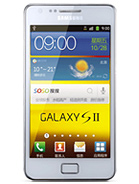 Samsung Galaxy S2 (2011)
This phone set the trend for subsequent releases having each having bigger screens
and a better camera and more memory / storage. This time a 4.3inch screen and 8mpx
camera. Initial phones ran Android 2.3.4 later upgraded to 4.1. A 3G phone with HSPDA
capability. It was one of the slimest pohones available in the market and set a trend
for future phones.
Samsung Galaxy S2 (2011)
This phone set the trend for subsequent releases having each having bigger screens
and a better camera and more memory / storage. This time a 4.3inch screen and 8mpx
camera. Initial phones ran Android 2.3.4 later upgraded to 4.1. A 3G phone with HSPDA
capability. It was one of the slimest pohones available in the market and set a trend
for future phones.
 Samsung Galaxy S (2010)
Released in 2010,as just a phone by Samsung not knowing it was the start of a
destinay and a multi-billion pound business. It as 4inch screen plus micro SD card
to allow for expansion of the storage. It was released against the HTC Desire and
iPhone 4 and by contemporary reports it felt less than a top of the range product.
Something that Samsung addressed over the years.
Samsung Galaxy S (2010)
Released in 2010,as just a phone by Samsung not knowing it was the start of a
destinay and a multi-billion pound business. It as 4inch screen plus micro SD card
to allow for expansion of the storage. It was released against the HTC Desire and
iPhone 4 and by contemporary reports it felt less than a top of the range product.
Something that Samsung addressed over the years.
© mobilephonetechnology.co.uk all rights reserved 2017-2025
